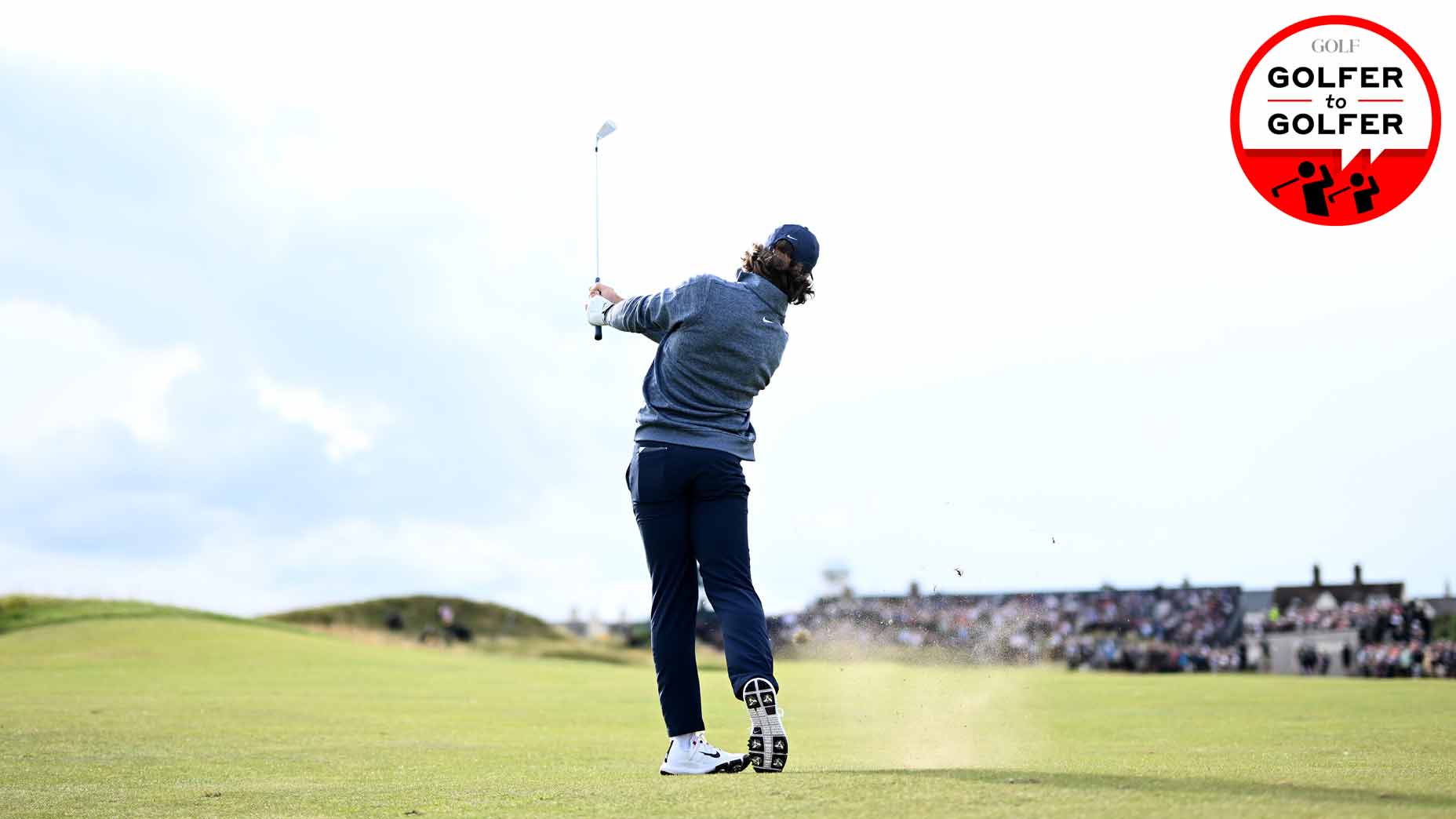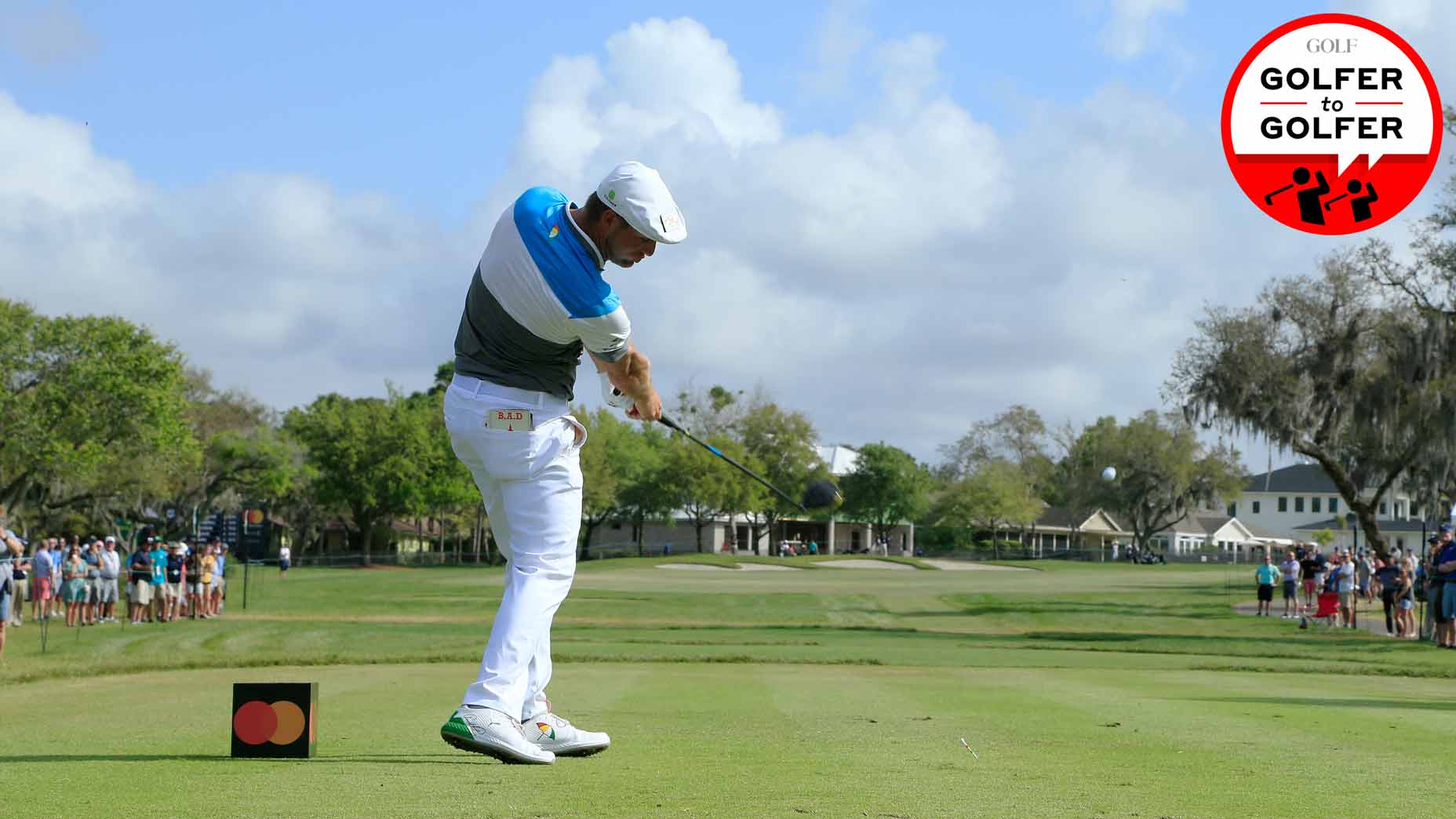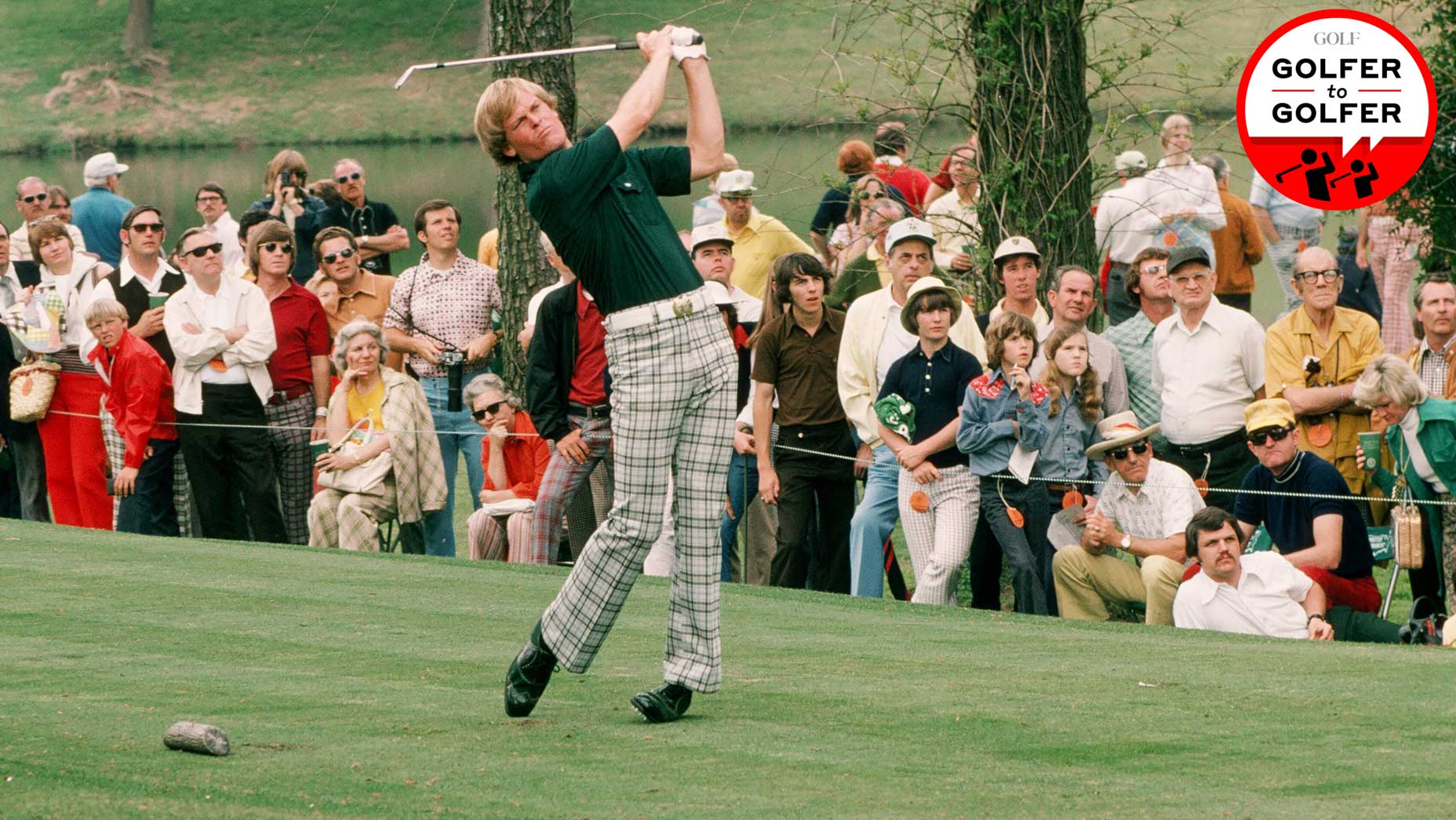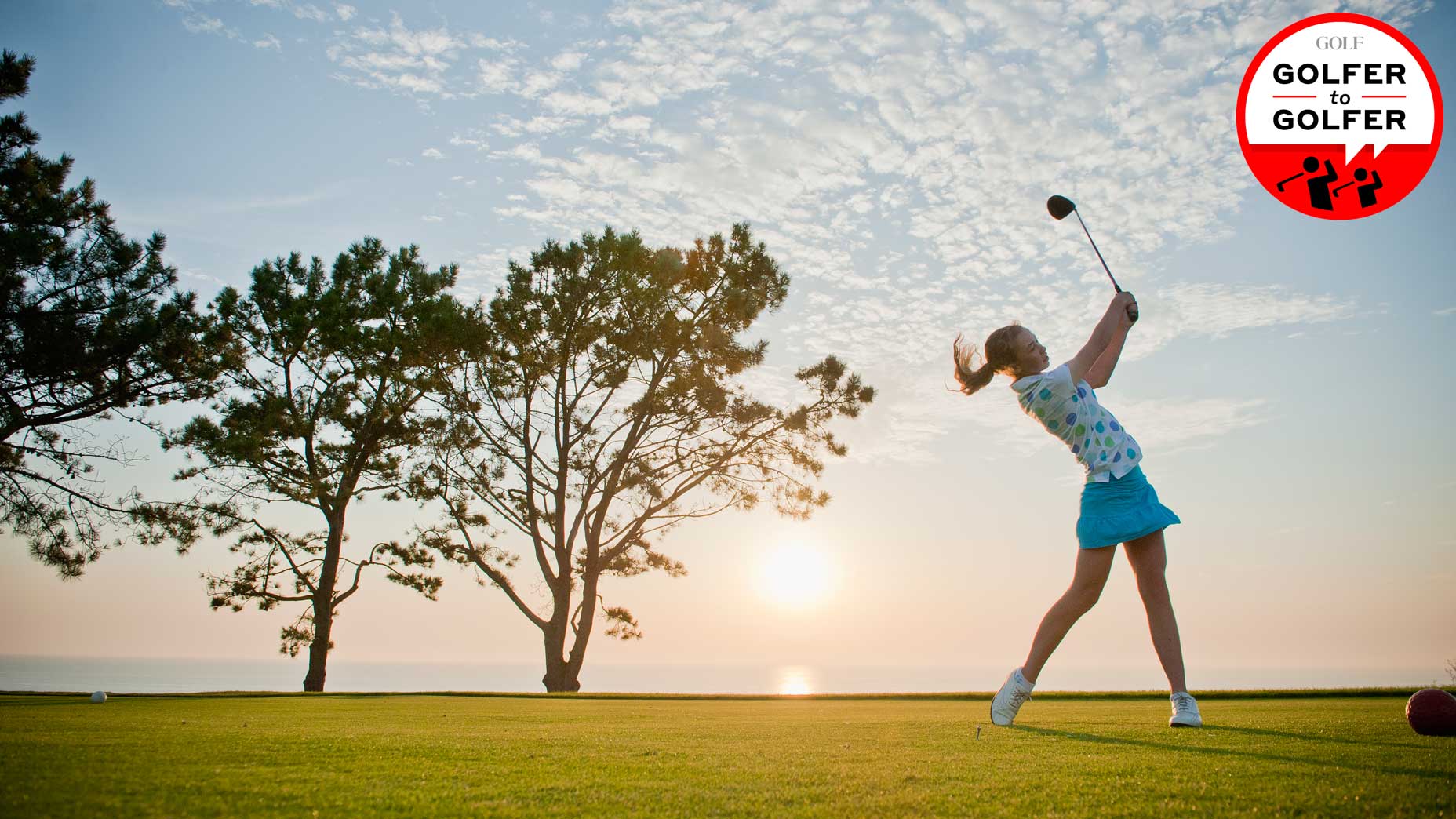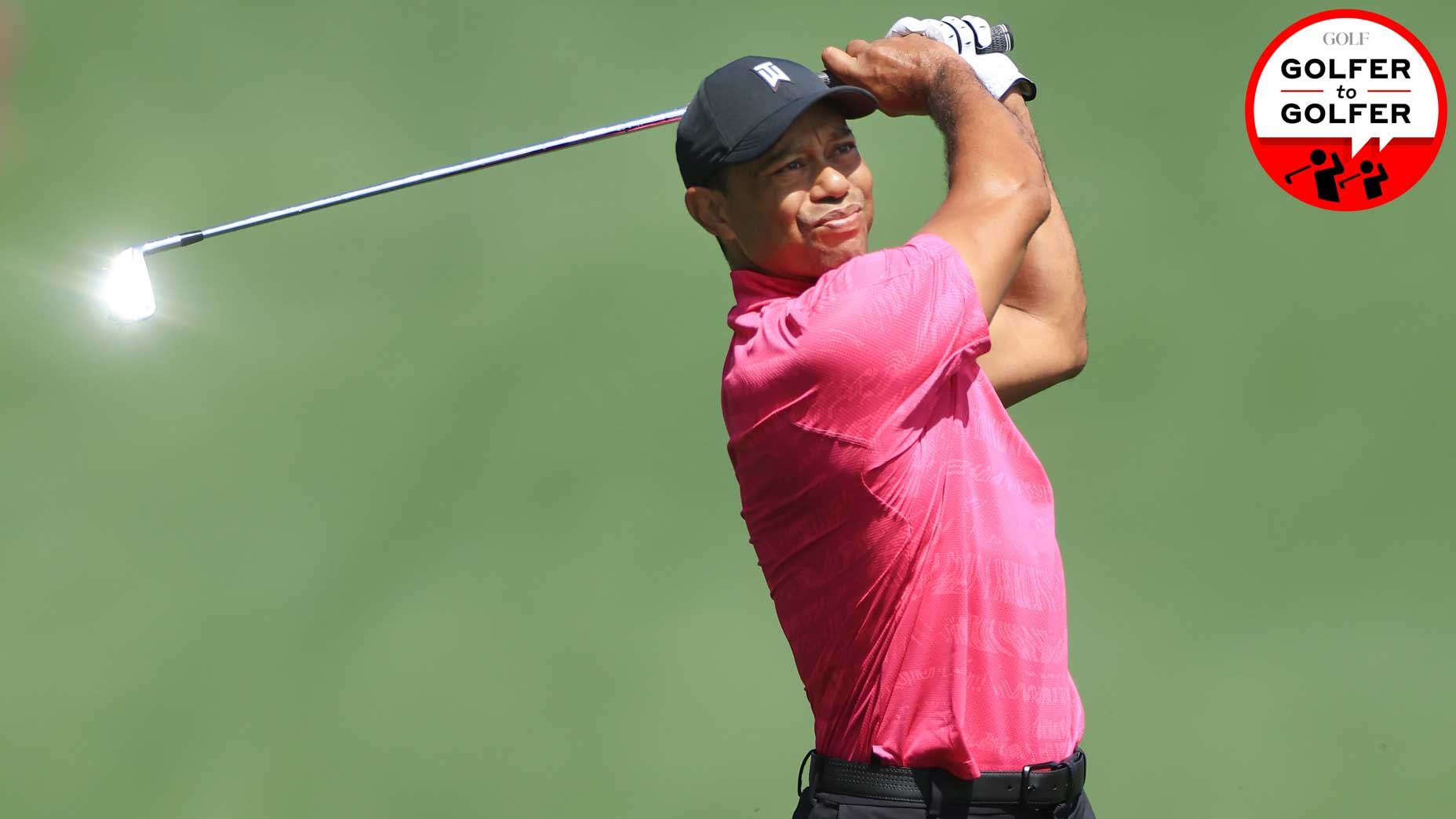Welcome to our new series, golfer-to-golfer, where we try to learn from all different kinds of avid players out there, in hopes that the rest of us can take away something that might improve our own games.
When you think of stalwart PGA Tour players, Hal Sutton is a first-class example that jumps to mind. He won the U.S. Amateur in 1980, and then three years later, was the PGA Tour’s leading money winner, Player of the Year, and a major championship winner
Then, after a nine-year win drought, he climbed back to the top of the game. He spent 50 weeks inside the top 10 of the rankings starting in 1999, and captured his second Players Championship trophy along the way. You probably remember the defining shot from that tournament…
Nowadays, the 14-time PGA Tour winner spends his days teaching at his Texas-based golf academy, and hosting his fantastic Be The Right Club Today podcast, which you can subscribe to right here.
“We’re a podcast for the really avid golfer,” Sutton says. Music to my ears.
On his podcast, Sutton talks a lot about the subject of swing changes. When to make them, and more importantly, when not to make one. Sutton’s opinion on the matter is pretty straightforward: That too many golfers make the mistake of thinking the only way they can shoot lower scores is making big changes to their swing.
1. Improve your course management
The first thing Sutton wants you to know is that making changes to your golf swing is really difficult, and only gets more difficult as you get older. If you embark on a swing change, beware that it’s going to take time and effort. There’s no way around it.
“Take myself as an example. I’m 64 years old. Me trying to change into a modern-day golf swing would change a lot of the dynamics of what I do in a split second,” he says. “It takes a lot of hard work, and you may not like the results at first. Golfers have to be prepared for that.”
But, Sutton says, there’s good news, because there’s another, quicker way to get better: Improving your course management. That means aiming at the middle of greens, playing high-percentage shots like bump-and-runs, and avoiding the mistake of not taking enough club.
Master these simple skills, Sutton says, and you’ll get better quicker than embarking on a swing change.
“Most people completely miss the point about how to get better,” he says. “Learning how to play golf with what you have is the quickest way to get better. Most people don’t even know how to play, they just go out and play. They don’t know how to think their way around a course, they don’t know what club to pull, they don’t have any imagination, they don’t realize that there are three or four shots for every shot. Even for a so-called bad player, there are multiple shots.”

2. Build clubface awareness
But a swing overhaul isn’t the same thing as making subtle changes, Sutton is quick to note. Too much curve can mean lots of headaches.
“For example, if a golfer comes to me and they’re way over the top, that clubface is going to have to be wide open most times, so they’re going to be hitting it really short and really right,” he says. “At that point, I’d say if we can get a better face, and a better path, and if we can do that, we can start to play a little bit better golf because we can see where the ball is going to come down.”
Ultimately, Sutton says, it goes back to understanding your clubface — and knowing how to control it.
“Building clubface awareness is one of the first things I’d look at for somebody who really wants to get better,” Sutton says. “The ball goes wherever the clubface is pointing. One of the things I like to know is find out whether they know where the clubface actually is. It’s interesting how few people know where their clubface is, when there’s not a single Tour player you can go talk to who doesn’t know where their clubface is at different points of their swing.”
There’s lots of ways you can do this, Sutton went on to say. Hitting short chip shots, punch shots, using the camera on your iPhone to see where the clubface is at different points in your swing, or even keeping track of your numbers on a Trackman (if you have access to that technology) can all help you build clubface awareness. But even if it means starting with small, slow swings, the more you know where the clubface is during your swing, the better off you’ll be.



